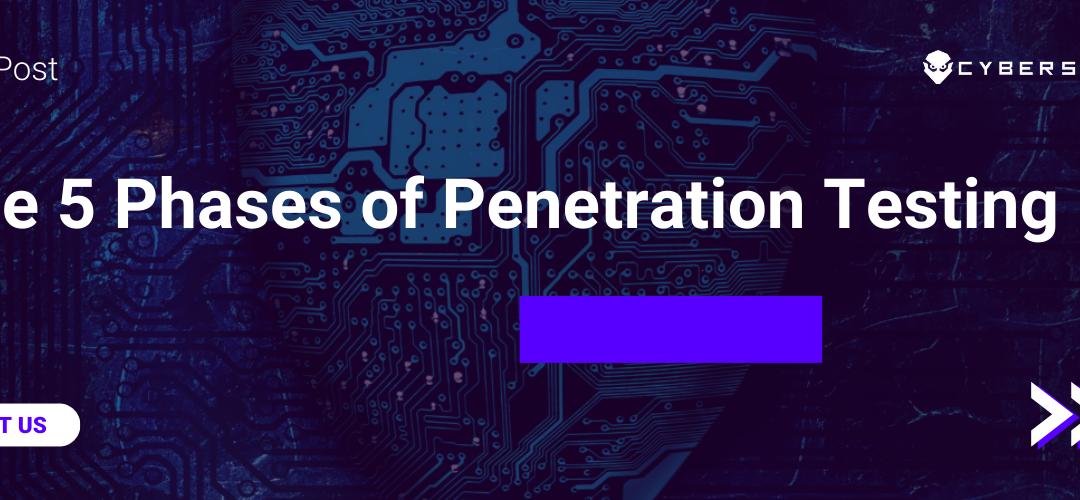According to the global IBM-Ponemon Institute Cost of a Data Breach 2021 report, credential-related breaches take 250 days to discover, on average, and another 91 days to contain. IBM shared also that they cost on average, US$4.37 million each, and account for 20 percent of all breaches. Penetration testing, or pen testing, is an essential part of an organization’s vulnerability management processes. These tests can help your organization measure the efficacy of a vulnerability management program to detect weaknesses before a cybercriminal does and spare you from events like those found in the Cost of Data Breach 2021 report.
Contrary to vulnerability assessments, pen tests are not continuous or ongoing. Instead, pen tests provide a snapshot of your organization’s cyber posture at the time they are conducted. The process is designed to provide an in-depth understanding of the attack surface to determine areas of weakness or avenues for exploitation. Moreover, pen tests offer insight into the effectiveness of any existing vulnerability management protocols a business may have in place and help bolster your cybersecurity overall. In this blog post, we’ll explore the 5 phases of penetration testing, as shared by our technology partners at Tenable, to provide more insights into an increasingly popular vulnerability management method.
For more information on the differences between pen testing and vulnerability assessments, feel free to check out our previous blog post: 6 Reasons Organizations Need Vulnerability Assessment
Stage 1: Enlist Pen Testing Services
Pen tests are typically provided by a reliable Managed Security Service Provider (MSSP) staffed with certified and experienced pen testers. There are many cybersecurity organizations, like Cyber Sainik, that offer penetration testing tools and services.
Stage 2: Determine the scope of the test
Determining a plan or scope for your pen test is particularly important. This part of the process defines for the pen tester the areas of your cyber infrastructure that they will be examining. For example, a pen tester can target the network as a whole, or tailor the test to focus on a particular area or subgroup. This process is also useful for outlining the methodologies and tools that will be used to conduct the penetration test.
Stage 3: Conduct the test
After devising a plan and determining the scope of your penetration test, the test can be conducted. Typically, a pen tester will begin by conducting a variety of scans on the targeted areas that were determined during stage 2. They conduct these scans to gather extensive information and data regarding the organization’s existing security protocols, which can then be used to find gaps and vulnerabilities. Once insights into your security measures have been established by the tester, they should proceed with utilizing a variety of exploitation methods to attempt access. After gaining access, the tester will determine how long the access can be maintained, and which systems they can tap into from the breach. This process is intentionally designed to mimic the techniques and strategies used by hackers in the real world for accurate insights into your organization’s vulnerabilities. Once the pen test has been completed, the pen tester will proceed with removing all evidence of the scans and testing practices that were utilized.
Stage 4: Report on findings
Once completed, the pen tester provides an extensive report outlining the findings of the test. This report will focus on what the vulnerabilities are, how they are exploitable, and where gaps in existing security measures lie. The pen tester outlines, too, the impacts a breach can have on the organization or business. Reviewing these findings with your team, and devising a mitigation plan that prioritizes the vulnerabilities which pose the greatest threat are crucial next steps in utilizing the information provided by the pen tests.
Stage 5: Follow-up
Regular penetration testing is recommended by cybersecurity professionals, especially in the dramatically shifting digital world of today. Actions of an organization that are typically deemed inconsequential can have significant, if not severe, consequences from a cybersecurity perspective. Once the plan for mitigation and/or remediation has been developed and implemented, conducting additional penetration tests to review the success of your business’s treatment methods is strongly recommended.
Cyber Sainik Can Help!
The cyberhealth of our clients and community is our top priority. Because of this, we provide your first penetration test for free! As part of our cybersecurity services, Cyber Sainik also offers a variety of tools and technology to safeguard data, protect endpoint devices, and secure network layers. Alongside our penetration testing services, we offer premium vulnerability assessment services to help ensure that your systems aren’t susceptible to cyber threats. Contact us today to take your Denver organization’s cybersecurity to the next level, starting with a free pen test.
Source list:
- https://www.tenable.com/source/vulnerability-assessment
- https://www.tenable.com/source/penetration-testing
- https://www.ibm.com/blogs/ibm-anz/this-type-of-data-breach-will-cost-you-more-time-and-money/



